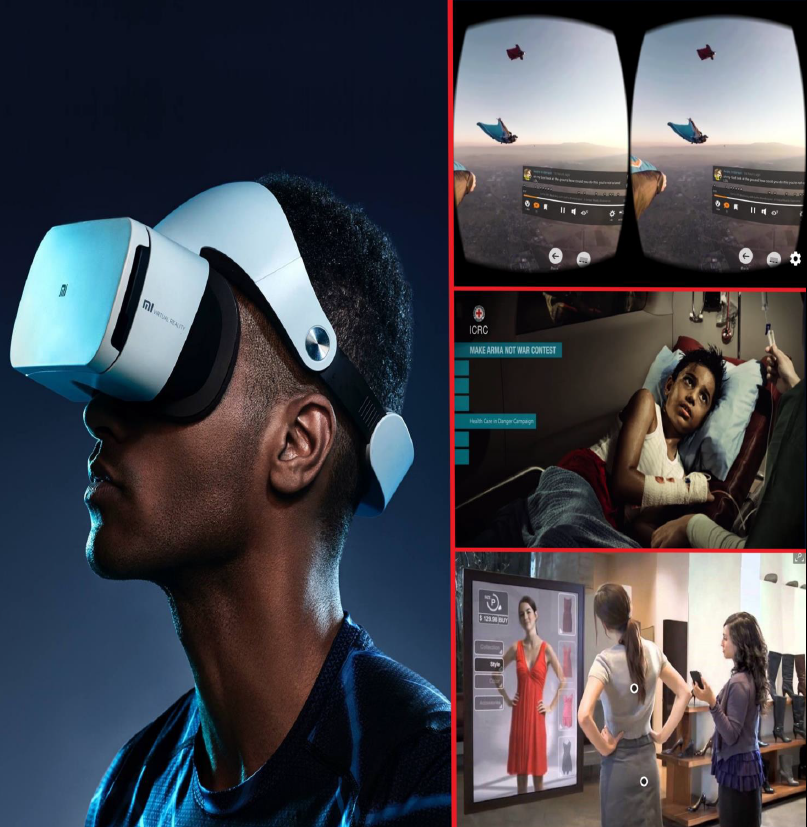
5 min
Our days consist of endless information management. It can be difficult to know which parts of our daily lives are truly impacted by subtle yet incessant nudges. Understanding how specifically engineered influence campaigns really affect the way we think, believe and behave can change how we perceive the information itself. And understanding more about the neuroscience of behavior change and influence can increase the efficiency and efficacy of our own project design process.
The ICRC is committed to continually expanding institutional knowledge on the field of behavior change because influencing the behavior of parties to conflict is one of our primary goals. Protection and prevention activities are inherently people-centered; our proximity to affected populations is what allows us to carve out neutral spaces, prevent conflict escalation, and mitigate the impact of violence on civilians.
To explore the world of behavior change and influence, the Innovation Unit invited five experts to a one-day gathering in Geneva to pick their brains for insights on such topics as left versus right brain theory, community engagement, global behavioral economics research and medical virtual reality.
Our Panel of Experts

Dr. Gregor Hasler is a Swiss psychiatry researcher, psychiatrist and psychotherapist at the University of Fribourg whose work covers, among many other things, stress and resilience. The presentation he provided for the audience gave an in-depth and fascinating look into biomarkers and the intricate functionality and minutia of the human brain.
Rocky Sanchez Tirona traveled from Manila to showcase the amazing work she contributes to as Vice-President of the NGO, Rare. This organization has accomplished sustainable behavior change projects at community level throughout the Philippines. Her perspective on humanitarian work as a former advertising executive brought an impactful and meaningful exchange about the relevance of human-centered design to encourage ownership and sustainability. 
Dr. Ana Maria Munoz Boudet is a behavioral scientist with The World Bank’s Washington, D.C.-based Mind, Behavior and Development Unit (eMBeD). Their team of experts travel the world to diagnose, design, and evaluate behaviorally informed interventions. The team examines a wide set of influences, paying attention to the social, psychological, and economic factors that affect what people think and do.
Dr. Albert Rizzo is the Director for Medical Virtual Reality at the Institute for Creative Technologies for the University of Southern California in Los Angeles. A psychologist by training, he works with US soldiers suffering from PTSD using virtual reality as a treatment mechanism. His insights into the  efficacy and opportunities of virtual environments to influence and measure stress responses shed a unique light on how technology interacts with the brain.
efficacy and opportunities of virtual environments to influence and measure stress responses shed a unique light on how technology interacts with the brain.
Finally, we were grateful to have Dr. Jürg Kesselring contribute opening remarks for our behavior change symposium. Dr. Kesselring is a highly distinguished neurologist with a career spanning several decades and multiple countries and he is also a member of the Assembly of the ICRC, which provided professional insights extremely central to our work. His welcome speech demonstrated the shared values between medical and humanitarian work and explored the beauty and complexity of the human mind.
The Symposium
The day’s events originated with the ICRC’s Influence Platform, a transversal group that consolidates ICRC’s own knowledge and experience on influence to be transformed into widespread operational application. For participants, the day provided an opportunity to learn new methodologies and uses for behavioral science; many left with a deeper appreciation for the complexities of the brain and new ideas on how to incorporate behavior change techniques into their activities.
“Our goal for the behavior change symposium was to bring together decision-makers who are involved in influence activities,” says Nan Buzard, Head of Innovation. “The discussion around the table after each lecture was amazing because the speakers had questions on everything from mental health to the future of humanitarian work.”
ICRC’s Director-General was able to provide the day’s closing remarks.
“I am deeply convinced that having behavioral change put at the core of what we do – reflecting and being open about it – is central not just to the ICRC but to humanitarian work,” said Yves Daccord. “I am struck by what is happening in Hong Kong, in Sudan, in France with the leaderless influence through social media. Regarding behavioral change and how we mobilize ourselves today, we must understand what works, what doesn’t and why.”
What Next
A podcast of the symposium will be available in the coming days.
The Innovation Unit has already developed research into the field of Extended Reality and how behavior change is measured and affected in Virtual Reality. As we continue to develop our knowledge of how technology and behavior change intertwine, ICRC’s Innovation Unit is also working with internal partners like the Centre for Operational Research & Experience (CORE), International Law & Policy (DP), Relations with Arms Carriers (FAS) and the Virtual Reality Unit (VRU) to create a study that measures memory retention of IHL in armed forces through virtual environments. We hope to produce data that allows IHL training to be more measurable and impactful.
Innovation is also in the process of creating an Extended Reality User Manual for the ICRC that will guide users through the opportunities and risks of virtual environments, when XR can be most effective, and how context and technology can be best utilized together.
- Read our Extended Reality Report – determining needs, expectations and the future of XR for the ICRC
- Read our Article Review about virtual reality & behavior change
- Read more about influencing behavior on InspiRED blog


